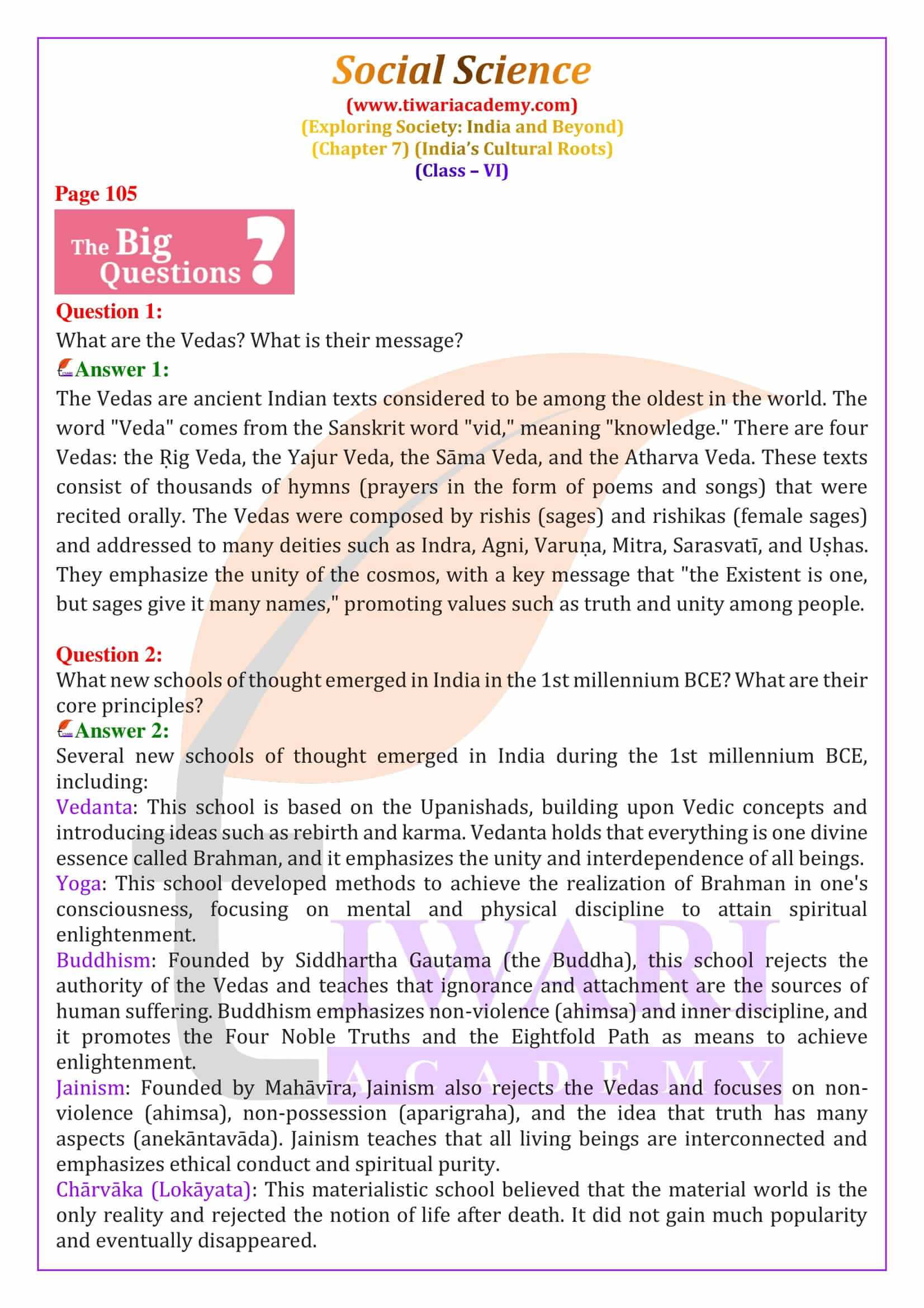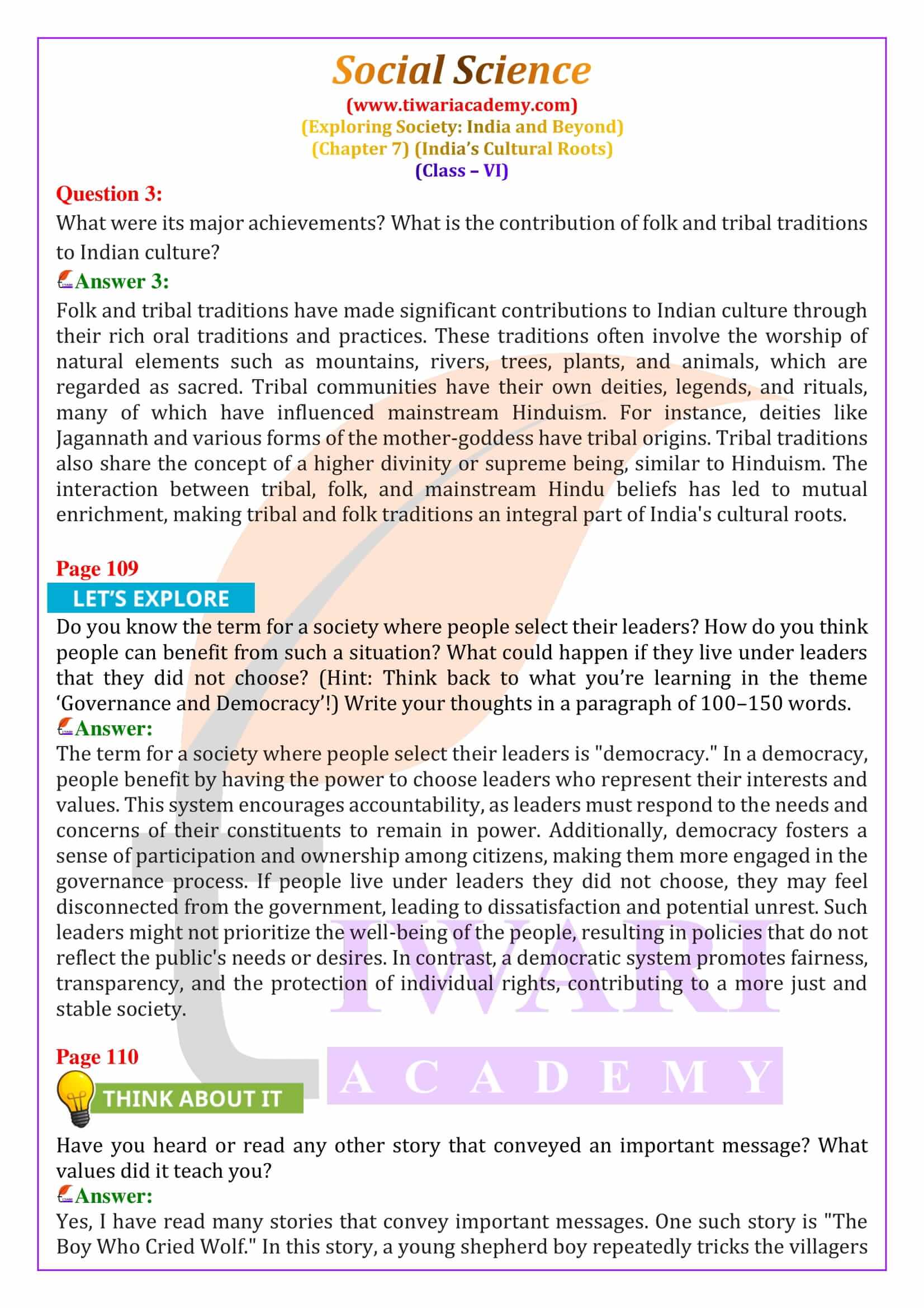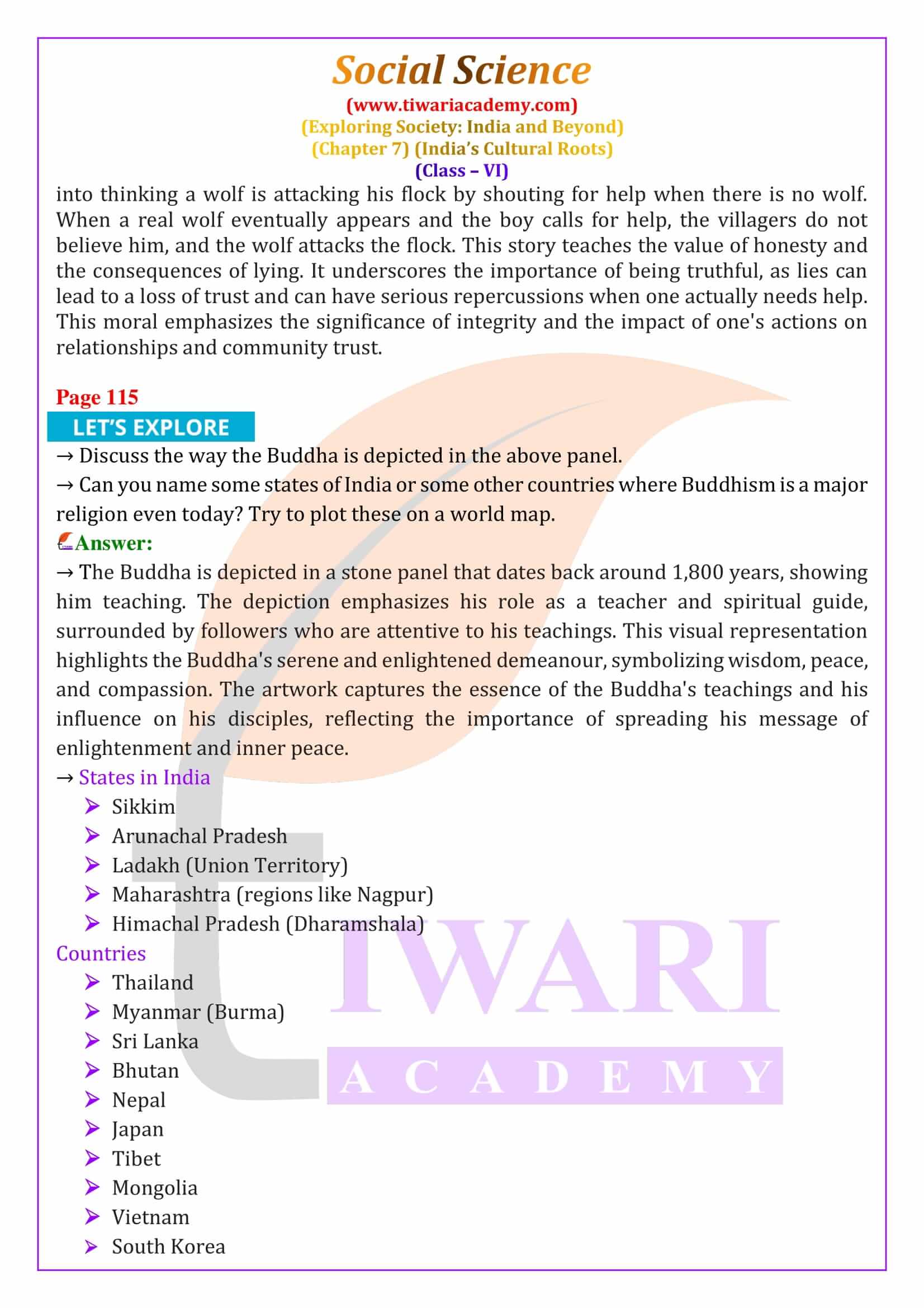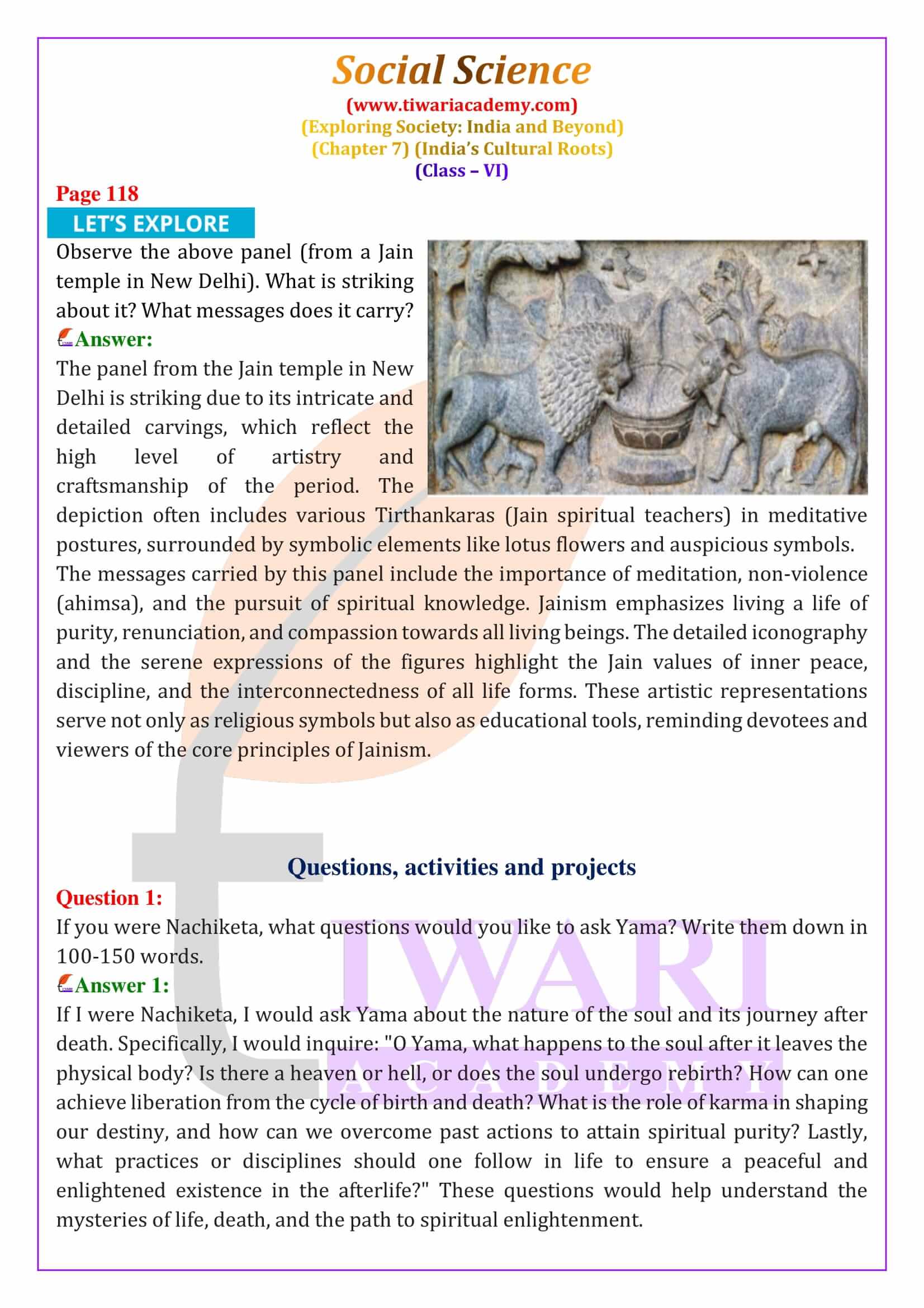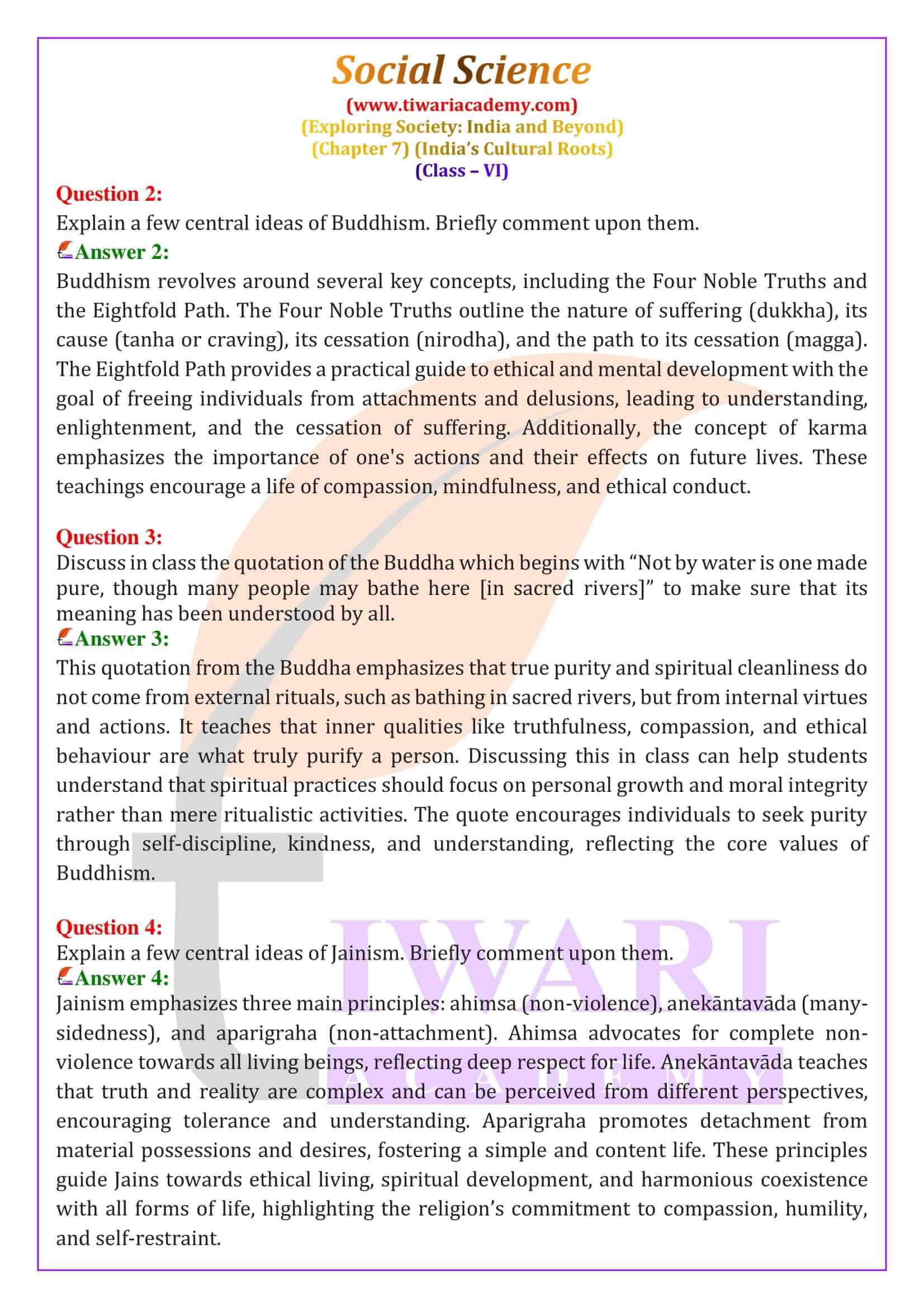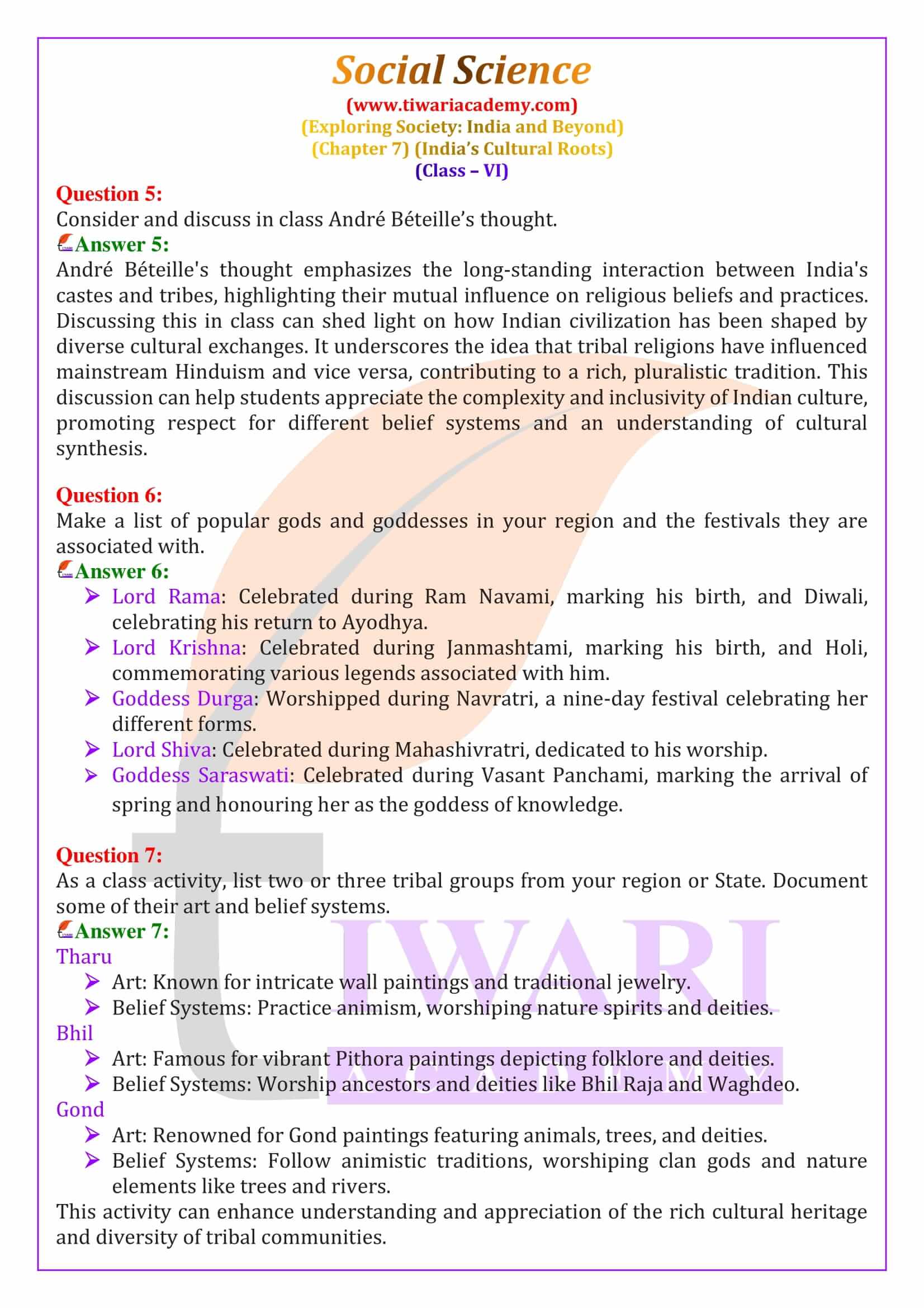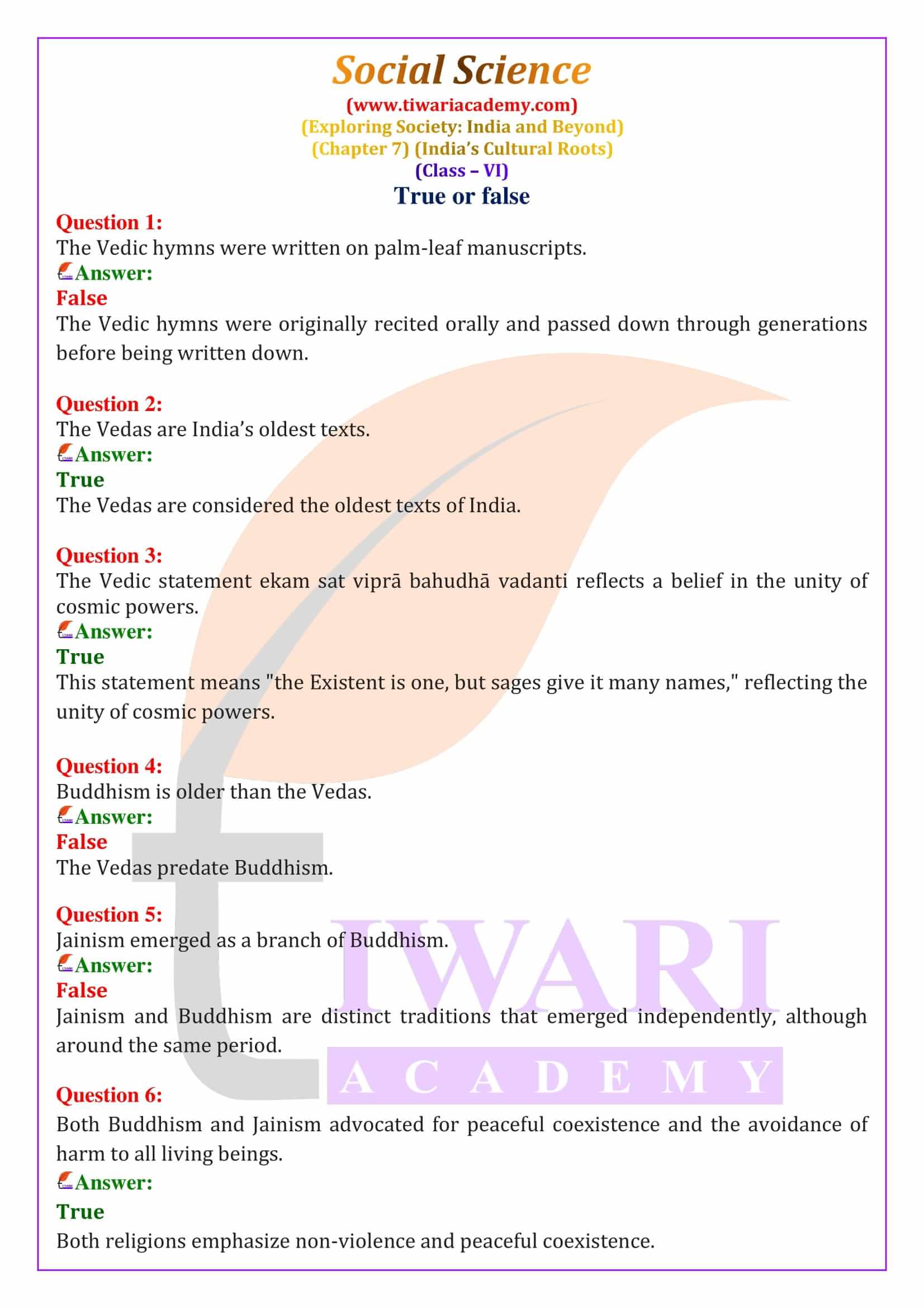NCERT Solutions for Class 6 Social Science Chapter 7 India’s Cultural Roots for session 2025-26. All the question answers of exercises in Class 6 Social Science Chapter 7 Exploring Society – India and Beyond India Beyond in History Section are given here to use free.
Class 6 Social Science Chapter 7 India’s Cultural Roots Question Answers
Introduction to India’s Cultural Roots
India’s culture is deeply rooted in ancient traditions, much like a large tree with many roots and branches. These roots represent the various aspects of Indian culture, including art, literature, science, religion, and philosophy. The branches symbolize the diverse expressions of this culture, all connected by a common trunk. The origins of these cultural roots can be traced back to ancient civilizations such as the Indus or Harappan civilization. Over time, various schools of thought emerged, shaping India into a unique and vibrant nation. Understanding these roots helps us appreciate the rich heritage that defines “India, that is Bharat.”
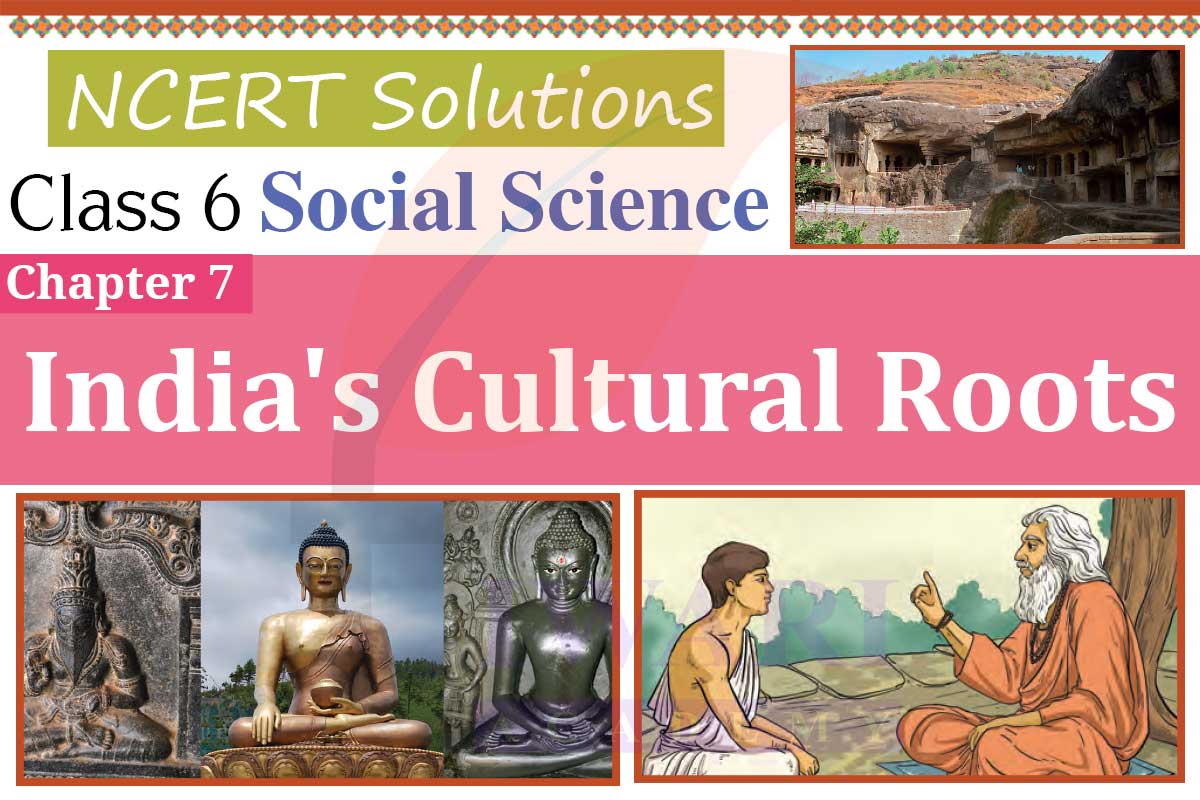
The Vedas and Vedic Culture
The Vedas are India’s oldest and most revered texts. The word “Veda” means knowledge, and these texts consist of hymns and prayers that were passed down orally for generations. There are four Vedas: Rig Veda, Yajur Veda, Sama Veda, and Atharva Veda. Composed by sages and seers, these hymns are dedicated to various deities and emphasize values like truth and unity. The Vedic society was organized into clans or janas, and these early communities worshiped nature and sought to maintain order in the cosmos. The meticulous preservation of Vedic chanting led UNESCO to recognize it as a masterpiece of oral heritage.
Vedic Schools of Thought
Vedic culture gave rise to many rituals and schools of thought. Rituals, often involving offerings to fire (Agni), were central to religious practices. Over time, new concepts such as rebirth and karma emerged, leading to the development of schools like Vedanta and Yoga. These schools introduced profound ideas like the oneness of the universe (Brahman) and the divine essence within every being (Atman). The Upanishads, a group of texts building on Vedic ideas, played a crucial role in shaping these philosophies. These teachings emphasised the interconnectedness of all life and the importance of seeking higher knowledge.
Buddhism: A New Path
Around 2,500 years ago, a young prince named Siddhartha Gautama sought to understand the root cause of human suffering. After years of meditation, he attained enlightenment and became known as the Buddha, the “awakened one.” Buddhism, which emerged from his teachings, rejected the authority of the Vedas and introduced concepts like non-violence (ahimsa) and inner discipline. The Buddha founded the Sangha, a community of monks and nuns dedicated to spreading his teachings. Buddhism’s emphasis on compassion and self-discipline had a profound impact on India and much of Asia.
Jainism: The Path of Non-Violence
Jainism, another significant school of thought, emerged around the same time as Buddhism. Founded by Prince Vardhamana, later known as Mahavira, Jainism also emphasized non-violence, truth, and simplicity. Jain teachings like anekantavada (the idea that truth has many aspects) and aparigraha (non-attachment to material possessions) are central to its philosophy. Jainism, like Buddhism, stresses the functions of all life and the importance of living a life free from harm. The influence of Jainism on Indian culture is evident in its focus on ethical living and respect for all living beings.
Folk and Tribal Traditions
India’s cultural roots are also deeply intertwined with its rich folk and tribal traditions. These traditions have been passed down orally, often without written texts. Tribes, defined as close-knit communities with shared culture and language, have their unique belief systems and practices. There has been a constant interaction between these tribal traditions and mainstream schools of thought like Hinduism. For example, many Hindu deities have tribal origins, and tribal communities often have their versions of epics like the Mahabharata and Ramayana. This exchange has led to the mutual enrichment of India’s cultural heritage.
The Interconnectedness of Indian Culture
The diverse cultural roots of India, from the Vedas to tribal traditions, are interconnected and have influenced each other over millennia. Despite their differences, schools of thought like Vedic, Buddhist, and Jain share common concepts like karma, rebirth, and the quest to end suffering. Tribal traditions, with their deep respect for nature and belief in a higher divinity, have also contributed to the richness of Indian culture. This interconnectedness is a testament to the inclusiveness and adaptability of India’s cultural heritage, which continues to evolve and thrive in modern times.

